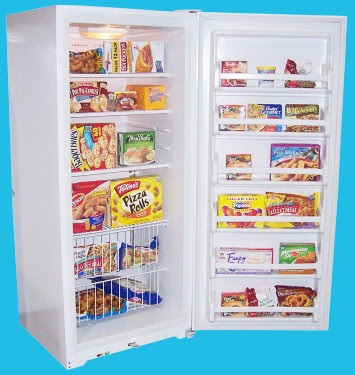The Best Ways to Thaw Food

The Best Ways to Thaw Food
More than ever before, in these hard economic times please take advantage of sales and maximize your freezer by buying food in bulk. Not only can this save you time, but it can also save you money — especially when buying meat. Just follow these tips for thawing frozen food, since leaving it out to defrost all day is dangerous.
The key to defrosting foods is to keep them at a safe temperature during the thawing process. As soon as food begins to defrost and become warmer than 40°F, bacteria can start to grow and spread. That’s why food should never be thawed and kept on the kitchen counter or placed in warm water.
Here are some guidelines to consider the next time you’re thawing frozen food to help prevent food-borne illnesses:
Refrigerator Thawing
The safest way to defrost food is to keep it in the refrigerator at 40°F or below. Frozen foods usually require 24 hours of thawing in the fridge for each five pounds of weight. But even smaller amounts of frozen food — such as a pound of ground beef or chicken breasts — usually take a whole day (eight to nine hours) to defrost. Normally if you thaw food for an entire day in the refrigerator, it will stay good for another day or two before cooking (fish is an exception, enjoy it as soon as possible). Red meat, however, can last up to five days after thawing.Best for: leftovers, meat, poultry, fish
Cold-Water Thawing
Cold-water thawing is faster than using the refrigerator, but it requires more attention. To thaw with cold water, place the food in a leak-proof plastic bag. It’s important to make sure the bag doesn’t have a hole because there’s a chance that bacteria from the air or its surroundings can get into the food. Submerge the entire bag of food in the cold water, changing the water every 30 minutes. Small packages of meat or poultry (one pound) usually take an hour or less to defrost; larger packages can take up to two to three hours (or sometimes longer, depending on the size). Once the food is completely thawed, it must be cooked immediately.Best for: whole chickens and turkeys; chicken and turkey breasts
Microwave Thawing
Most microwaves now have a pre-set button for thawing frozen foods. Keep in mind that when you thaw in the microwave, some areas of the food may become warm and start to cook as it defrosts. Keeping defrosted food sitting in the microwave is not recommended because bacteria can grow when a certain temperature is reached. As with cold-water thawing, food that is thawed in the microwave should be cooked immediately after defrosting.Best for: fish, poultry, meat, vegetables, leftovers


Comments
Post a Comment